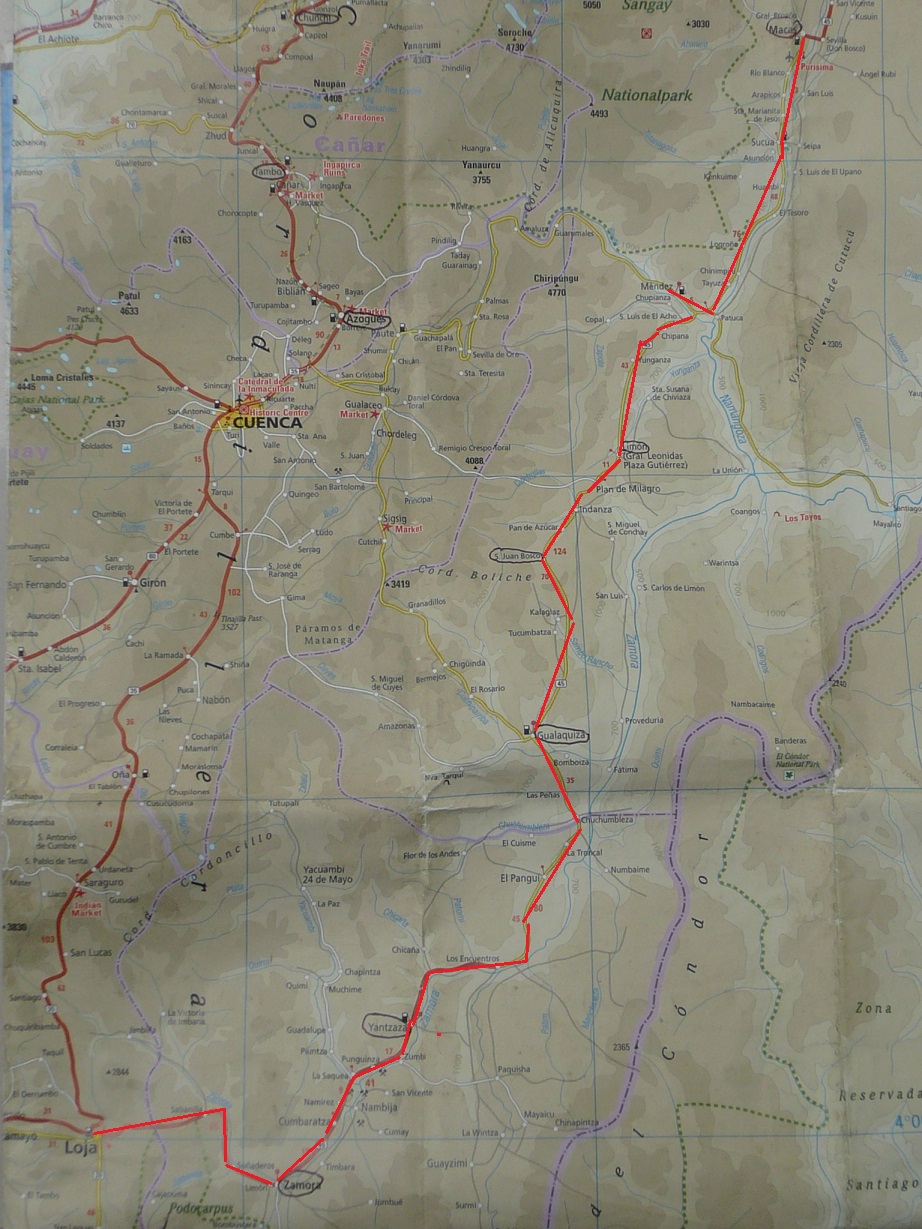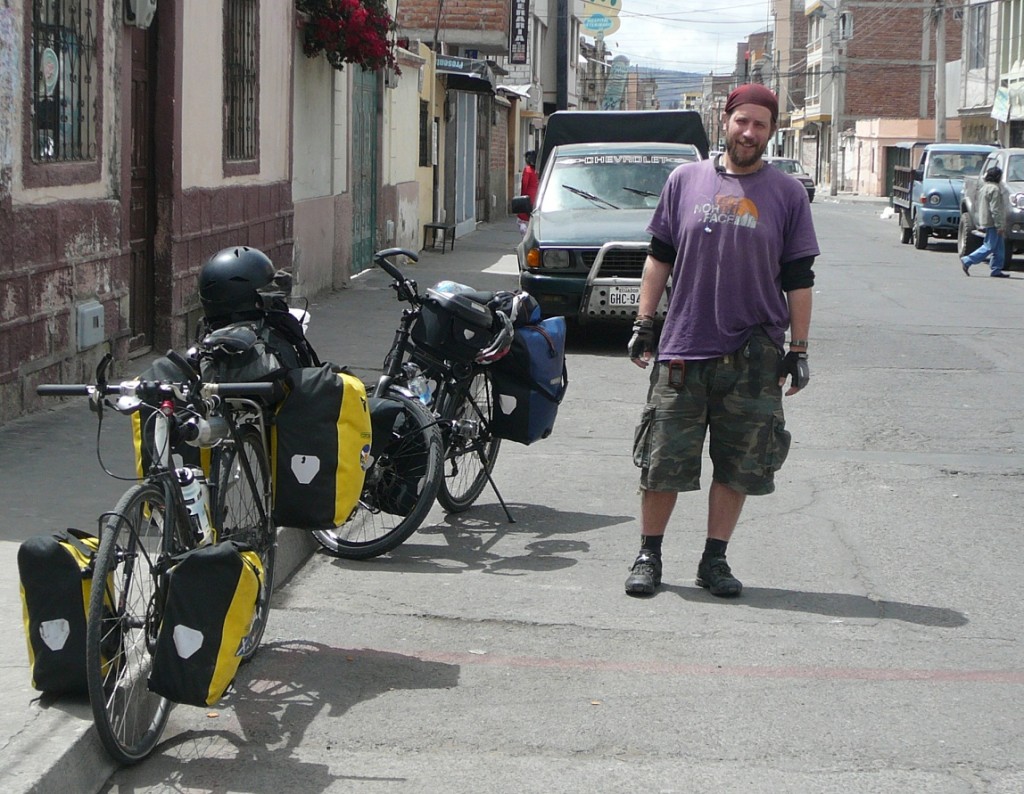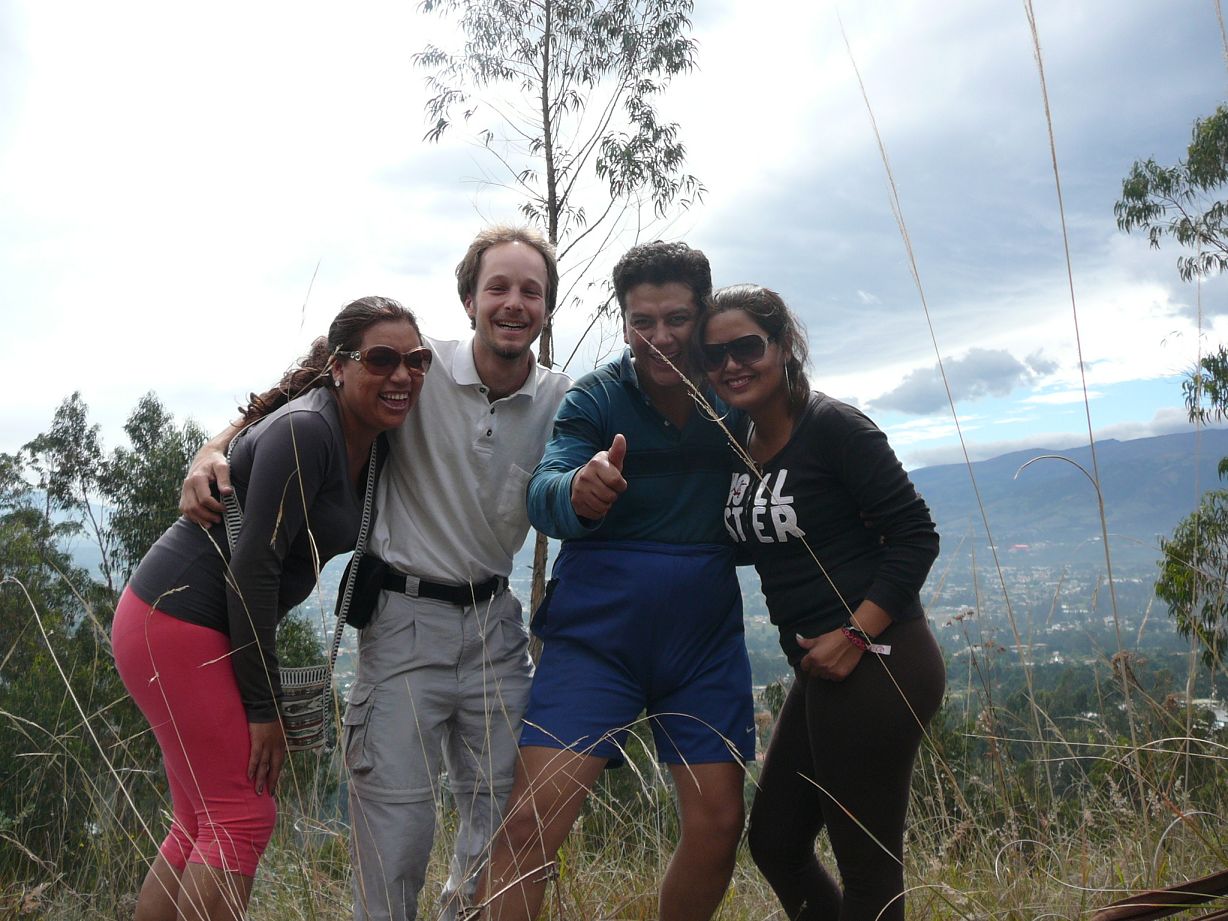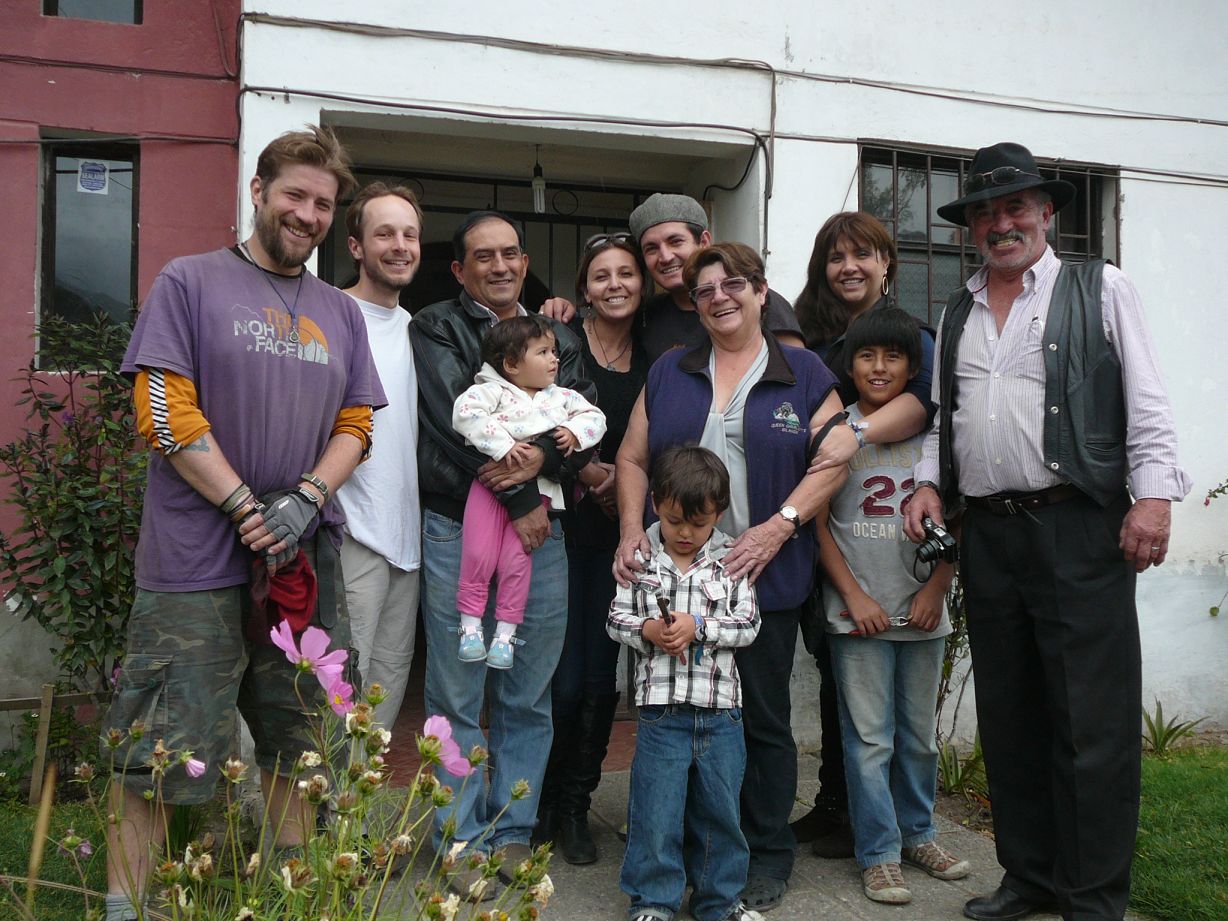On sacred ground
After a few calm days in Loja, Andy decided to go back to Quito for the time of his recovery. After a first failing try together at the bus terminal the evening before, we said goodbye (yes, it rained), he pushing one-handed his bike, while I pulled out of town in the late afternoon heading South. This time we knew that we would not see each other on this continent again, that we both had separate journeys now.
I enjoyed a long descent over Malacatos to Vilcabamba, which is the Quechua-word for ‚the valley of the sacred tree‘. Its Mediterranean climate and its reputation for the longevity of its residents make it an attraction for extranjeros and nowadays, there probably live more americans and europeans here than natives. The village is nicely surrounded by red hills which reach up into the paramó-region of the Podocarpus national park. Its rich mineral soil provides a perfect filter system for the local water enriching it as well with manganese whose oxidation capacity is dealt as one reason for the statistical longevity. I pitched my tent at the camping site of the Rumi Wilco Nature Reserve, a private national park on a green and specious hillside, and enjoyed some days of intense recreation: reading about the local geology and plants, hiking with German and Enric to the near Mandango mountain, walking to the Podocarpus park, and becoming acquainted with other travellers: with German students on a reforestation project, with a Dutchman hiking through the whole cordillera of the Andes (and I thought I was crazy enough!), with two couples travelling the world for years (when travelling becomes a life-style…), with girls of the Basque country, with German and Enric and there project to bring literature to the children of remote Andean villages.
Many of the local names for hills and plants, specifically in this area but in the whole country, carry poetic spiritual meanings originating from the Quechua language (e.g. Mandango ‚the sleeping deity‘) and the culture of shamanism and healing illnesses by natural means is very common. While I can be enraptured by the view of a landscape and fascinated by the complex interdependent system of nature, my western mind still has some caveat against the direct consumption of plants. For better or worse, we somehow trust Novartis more than the Cinchona (the national tree of Ecuador) in our garden. This might be a habit to challenge.






